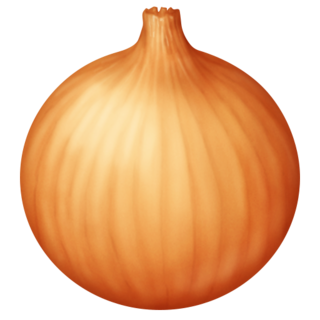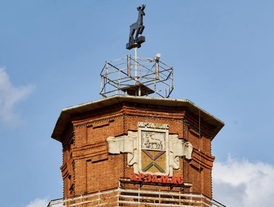Arzamas
You've probably already heard about the Arzamas literary circle, the Arzamas geese, the Arzamas onions, about Leo Tolstoy’s Arzamas horror, and even about Arkady Gaidar, who spent his childhood here. Maxim Gorky spent time in exile here, the famous itinerant artist Perov studied here, and Pushkin, Catherine the Great, and Suvorov have all visited Arzamas at one time or other. Once there were more than thirty churches alone here, and the saying about one eye on us, the other on Arzamas has spread far and wide. You can come here just for a day-trip, but bear in mind that there are also a lot of interesting things in the Arzamas district, so you may want to stay here longer.
A FEW FACTS
WHAT TO DO IN THE CITY
01
Begin your walking tour of Arzamas from Sobornaya («Cathedral») Square
It is simply impossible to pass by the huge Cathedral of the Resurrection, which is one of the largest religious buildings in provincial Russia.It was erected as a monument to the Patriotic War of 1812 using public donations over a period of 28 years. The place is also unique with a wooden altar-screen bedecked with elegant carvings, and paintings depicting evangelical themes, created using the grisaille technique by students of the Arzamas school of painting. The cathedral has been recently restored, and is a definite must see!
02
The Museum of the History of the Russian Patriarchate
This is the only museum in the world whose exhibitions are entirely devoted to the life of the Russian patriarchs. If you are lucky enough to get the right guide, you can certainly spend a couple of hours here.
03
Nearby, have a delicious and inexpensive bite to eat at the Rus cafe
Soup, mashed potatoes, beefsteaks, Russian aspic with mustard, and if you’re not in the mood for a big lunch, then just have a pot of tea with a local dessert. There is a wide range of dishes on offer, but everyone recommends the swan eclairs, or the selection of pies with onion, egg, or liver. Once you’ve topped up, you can be on your way again.
04
Take a snap with the Arzamas goose
The goose is the symbol of Arzamas, and the local geese were always plump and hardy. The goose is such an important bird that it is depicted on the coat of arms of the Arzamas district. You can take a picture with the city goose near the Reavil restaurant, which boasts a large selection of Russian cuisine, or with a whole gaggle of geese at the literary crossroads, but more on that later.
05
Don’t miss the interesting urban architecture
Arzamas is a fine example of a provincial town with unique civil buildings from the first half of the XIX century. One of the most intriguing is Khanykov’s House, an unusual example of wooden classicism, with wooden columns as its distinguishing feature.
06
More museums, but definitely interesting!
Arzamas has two Arkady Gaidar museums, a literary one and a house museum. They are very close to each other, so we recommend that you go to both at once. Еhe literary museum features manuscripts, photographs, along with the personal belongings of Gaidar himself, Bazhov, the Strugatsky brothers (you may be surprised to learn that they were all related). There, you can find out the secret of the origin of the writer's pseudonym. In the house museum, there is a small wing where Arkady spent his childhood and youth. There is a wonderful atmosphere here, you will find yourself completely immersed in that era.
07
Take a break at the literary crossroads
This intersection is so named because both the Gaidar Museum and the Gorky Museum are located here. Giant mushrooms, along with sculptures of a flock of geese, which tourists rub for good luck, immediately draw the eye. If you have time, pay a visit to the house where Maxim Gorky lived with his family when he was in exile. A special post was even set up in front of his apartment, from which the police kept a record of everyone who visited the writer. Today there is a museum dedicated to the writer here. In this very place, he finished his play «The Lower Depths» and wrote the famous slogan «Man - that sounds proud!». If you didn’t get enough Gorky in Nizhny Novgorod, then you can learn more about him in Arzamas.
08
Probably the most fashionable place in the city: Gaidar Park.
The finest architects have been working on the renovated park for more than a year. TThere is a fairground, a sports alley with areas for team games and workout, and a playground with Star of Gaidar artworks, where you can take a picture or two. The community centere holds regular master classes. The arboretum, which is located right in the park, grows over a hundred species of plants from all over the world.
09
Admire the Arzamas-1 Railway Station
Particularly if you are leaving Arzamas by train! The 120-year-old station was recently restored. In the evenings, it is elegantly illuminated, so it seems this place is located is somewhere in Western Europe.
10
Take a trip to Peshelan
We have already warned you that the Arzamas district is quite large, and you don’t have to restrict yourself to the city limits. As an example, you can visit the only museum of its kind located in an operating mine: the Peshelan Museum of Mining, Geology and Speleology. The museum covers around 3000 square meters and features eight halls where you can see how gypsum is extracted and cast your eye over around 300 rock samples. An important note: children under the age of 14 are not allowed in the museum!
























































